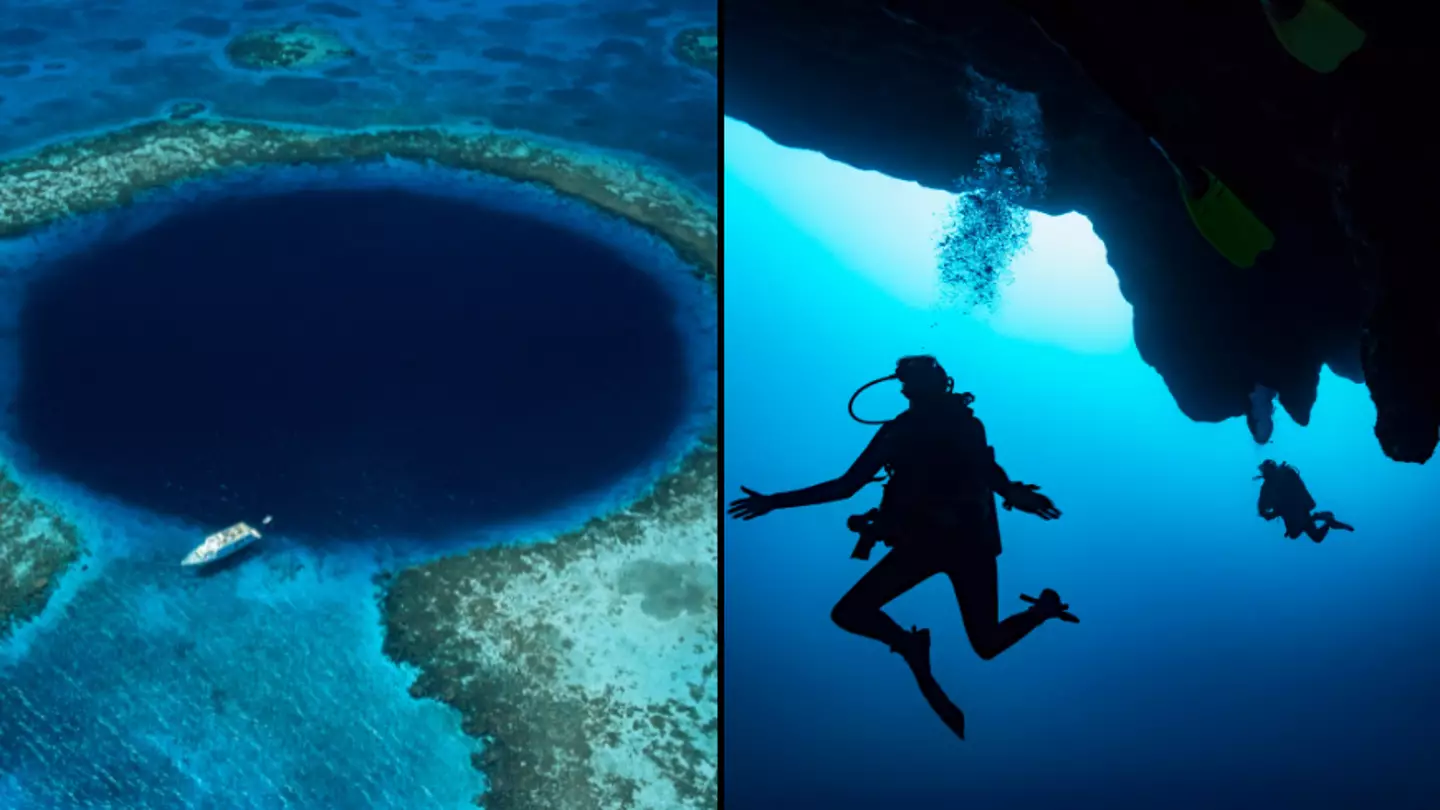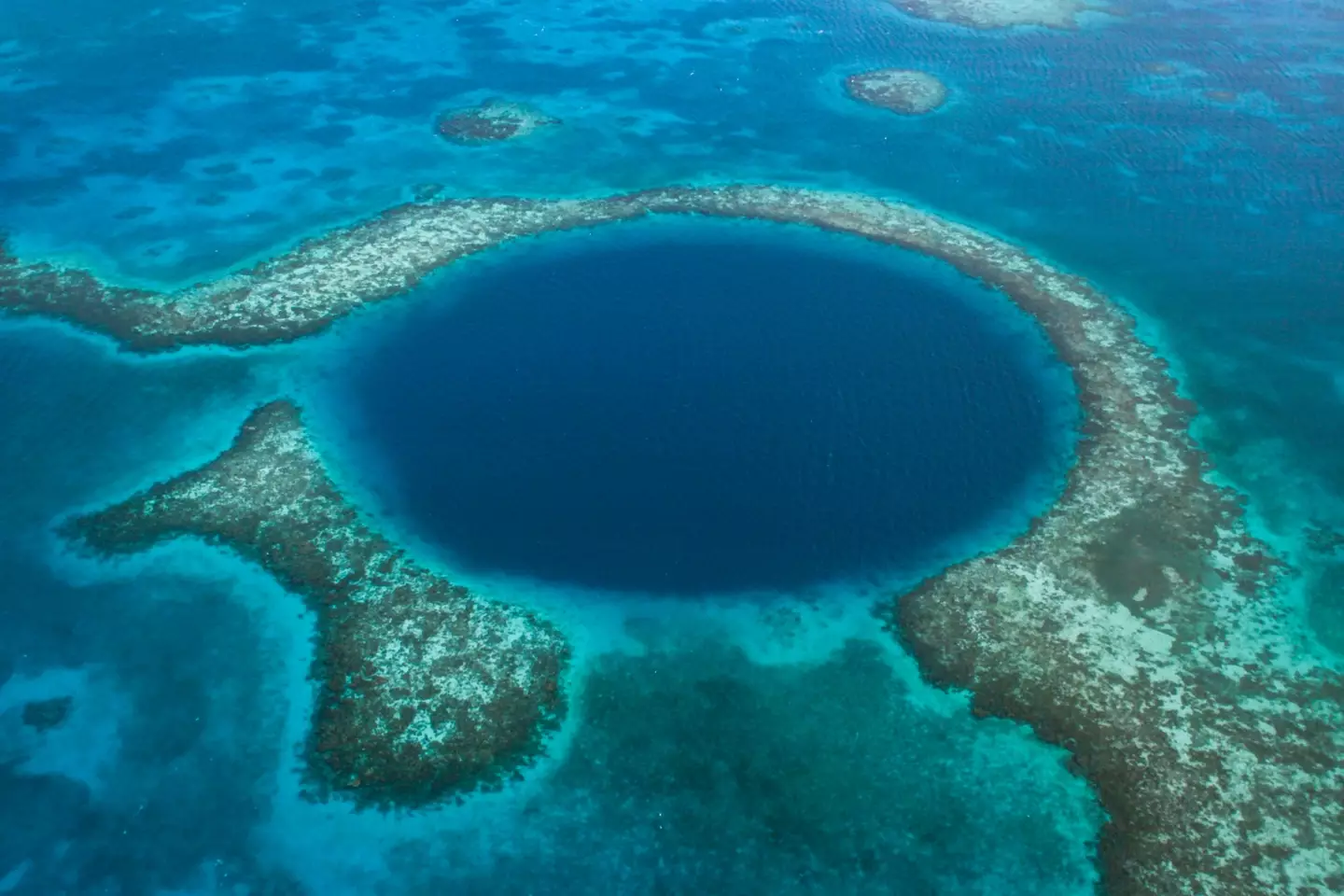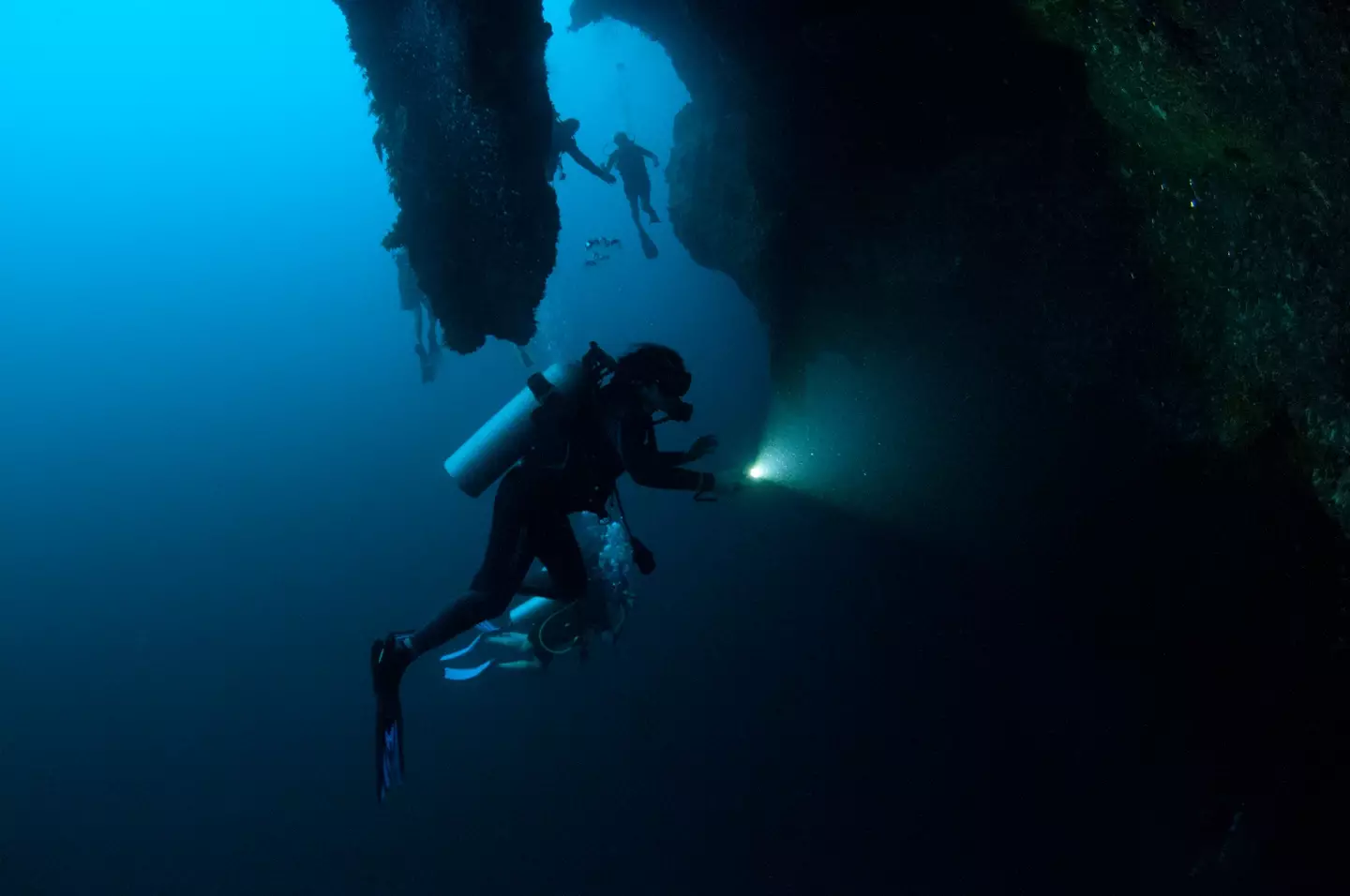
Located off the coast of Belize is the world's largest oceanic sinkhole and because it's a big hole that looks blue it's known as the Great Blue Hole.
It was made popular in the 1970s by explorer Jacques Cousteau and became a popular diving spot afterwards, but being 400ft deep it was difficult for anyone to make it down to the bottom.
There are other blue holes in the seas of our planet but none of them compare to the majesty of the Great Blue Hole.
Advert
In 2018 an expedition with Cousteau's grandson Fabien, Virgin billionaire Richard Branson and National Geographic Explorer Erika Bergman took two submersibles down to the bottom of the Great Blue Hole.
Getting down to around 300ft they found a layer of hydrogen sulphide below which the water was dark and devoid of life.

Bergman told Newsweek that there was no oxygen in the water below that point, with sea life not pushing beyond it while preserving whatever lay below it.
Advert
She explained that looking up from that point you could just about see the opening of the Great Blue Hole, with all of the light shut out in the murky depths.
What the divers found down there was a pile of rubbish from objects that had sunk into the hole over the years, including plastic bottles and somebody's GoPro with holiday pictures on it.
Also there were 'hundreds of conchs' and marks made by divers who had tried to escape the hole, along with the bodies of two people who had gone missing in the massive sinkhole.
It was decided that the bodies would be left where they were, with Bergman's team reporting their discovery to local authorities who then decided not to disturb the remains.

She also explained that she found a series of 'odd tracks' at the bottom of the hole, describing 'crisscrossing circles right around the center of the hole with no indication of what had made them'.
Advert
Whatever made them is a mystery we might not have an answer to.
The Great Blue Hole isn't the only one of its kind, there is one in the Red Sea which is reputed to have claimed over 100 lives over the years.
It gained a reputation as the 'divers' cemetery', though exactly how many people have lost their lives down there is unknown.
One of the most dangerous features of this hole is a part known as 'the arch', a long tunnel from the sinkhole out to the Red Sea near depths at which divers suffer from something called nitrogen narcosis, which affects mental and physical capacities.
Featured Image Credit: Getty Stock ImagesTopics: Weird, World News